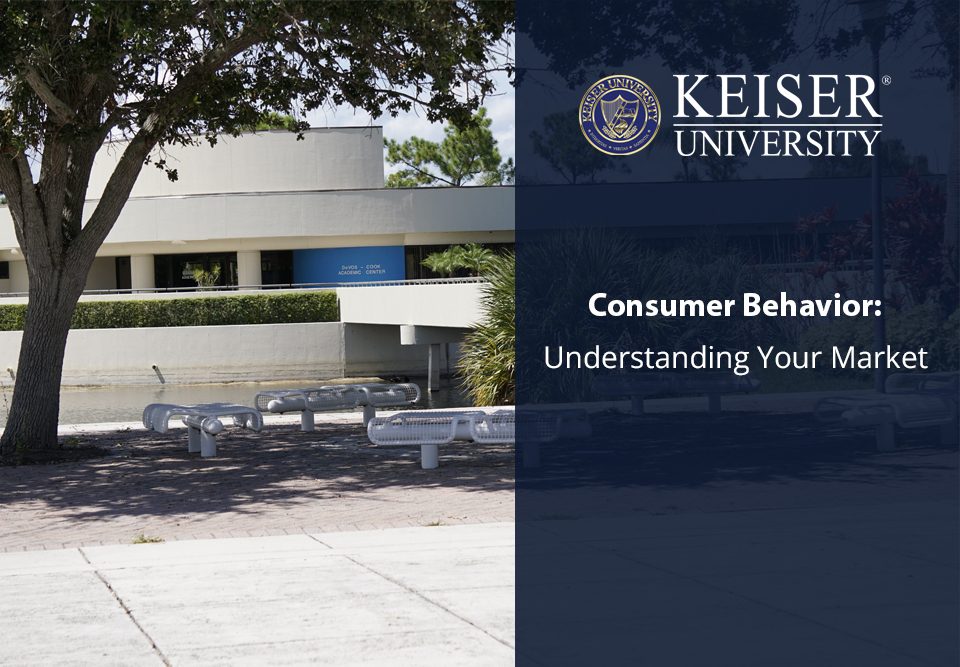In the marketing world, finding success in your campaigns is all about knowing your target audience. When you have a better understanding of what consumers’ buying habits and preferences look like, it’s a lot easier to reach them with your campaigns. All this boils down to understanding consumer behavior in business.
So, what exactly is consumer behavior and what does it mean for your marketing strategy? We’re diving into this and more so you can take your campaigns to the next level.
What Is Consumer Behavior?
Specifically, consumer behavior refers to the study of how customers (and prospective customers) decide on purchases and use products or services. This includes everything from a person’s buying habits and social trends to all the factors that go into their decision-making.
Importance of Consumer Behavior
Why does understanding consumer behavior matter in the marketing world, anyway? Well, to successfully reach your customer base or target audience, you need to know as much about them as possible. From there, you can refine your marketing strategies and optimize your campaigns to reach your target audience more readily.
Factors Influencing Consumer Behavior
There are many factors that can influence consumer behavior, ranging from personal and economical to psychological and even cultural or social factors. Consider the following factors and their potential influences on behavior:
- Personal – This can include a person’s upbringing and their general personality, such as whether they are outgoing or introverted.
- Economical – This includes a person’s earnings, how much disposable income they may have and other financial factors that may influence their buying decisions.
- Psychological – These factors can be more complex, but ultimately boil down to how behaviors change based on a person’s attitude or emotions. For example, a customer who just got a bonus at work may be feeling more willing to splurge or celebrate with a large purchase.
- Cultural/social – Social trends and cultural factors can also affect buying behavior, especially in the age of social media and influences.
Consumer Behavior and Marketing Strategy
When you understand not just how your consumers are likely to act but why, you can tailor your marketing strategies to yield results. This is why marketing professionals need to be experts in studying consumer behavior and researching their target audiences.
Understanding Market Segmentation
Another concept closely related to consumer behavior in the marketing field is that of market segmentation, which occurs when buyers (or prospective customers) are placed into different groups. These groups receive different marketing messages often based on consumer behavior trends, different demographics or similar factors.
Market Segmentation Role in Targeting Consumers
Market segmentation is a common technique for marketing professionals attempting to reach different audiences through different campaigns. Specifically, by segmenting different groups of consumers, it is easier to create subsets and separate campaigns for each. In other words, it’s easier to reach different groups of buyers with tailored campaigns than it is to reach a large group with a more general campaign.
Techniques for Segmenting Markets
There are several ways to segment markets of potential buyers, with some common techniques including:
- Demographic - Audiences are segmented based on demographic factors like age, gender or marital status.
- Geographic - Groups are segmented based on physical location (time zone, city or even climate).
- Behavioral - Buying groups are segmented based on behavioral factors like spending habits and brand interactions.
- Psychographic - Audiences are segmented based on psychological factors, ranging from political party affiliation, hobbies, and lifestyles to values or goals.
Psychological Insights Into Consumer Behavior
In studying consumer behavior, it’s important to consider psychological insights that can inform your audience’s decisions (and thus your marketing campaigns and strategies). Understanding these motivations can help tailor your messaging to resonate more deeply and effectively with your target market.
Cognitive Processes Influencing Consumer Decisions
There are many cognitive processes that come into play when it comes to influencing consumer decisions. Some examples include a buyer’s perception of your brand, as well as motivation, perception, attitude, learning and memory.
Emotional Drivers of Consumer Behavior
It is also impossible to separate emotions and consumer behavior, as all emotions have at least some potential to influence a person’s buying decisions and habits. Studies have shown time and time again that brands can successfully leverage high-impact emotions to increase sales. Some examples of high-impact emotions that can drive consumer behavior include:
- Thrill
- Well-being
- Confidence
- Belonging
- Security
Applying Psychological Principles to Marketing Strategies
Ultimately, the most successful marketing professionals are those who can apply psychological principles to their own strategies and techniques. There are many marketing psychology tactics that can be effective here, ranging from creating campaigns that resonate with your audience and its pain points to using color theory in your visual branding.
Social and Cultural Influences on Consumer Behavior
Of course, consumer behavior is about so much more than just psychology. As we’ve established, social and cultural influences can also have a major impact on buying decisions and other aspects of consumer patterns.
Role of Culture, Subculture and Social Class
Culture, subculture and even social class can affect a person’s perceptions of what they want and need. This is because we are all shaped by the way people live around us, which includes seeing what others are purchasing and are brand loyal to.
Reference Groups and Social Influence
Perhaps more than ever, consumers are also being influenced by others outside of their own families and circles of friends. We’re seeing this especially on social media, where so-called “influencers” are doing just that — influencing others to feel like they want or need something.
The Digital Era: How Technology Is Shaping Consumer Behavior
Social media influencers are just one example of the many ways in which technology is constantly shaping and reshaping consumer behavior. Today’s marketing professionals need to understand the ongoing impact of emerging technology, including how to leverage the most relevant digital channels to reach their target audiences.
Impact of Digital and Emerging Technology
Artificial intelligence (AI) and machine learning are a couple examples of emerging technologies that will inform marketing campaigns and advertising decisions for years to come. This is especially evident as it becomes easier for these platforms to collect and compile consumer data.
Leveraging Digital Channels to Reach Target Audiences
Marketing professionals can reach peak success when they can fully understand the digital channels where their target audiences are spending most of their time. From there, they can craft tailored and customized campaigns to reach those target audiences, address their pain points and make sales.
Data-Driven Insights: Using Analytics to Understand Your Market
Today, marketers also have access to more tools and resources than ever to help them better understand their target audiences. Taking advantage of these tools is key to maximizing each campaign.
Importance of Data Analytics in Understanding Consumer Behavior
Data analytics tools (including popular platforms like Google Analytics) make it possible to uncover consumer insights and market trends that can inform marketing decisions. Taking the time to familiarize yourself with these tools and use them to your advantage is key as a marketing professional.
Techniques for Collecting and Analyzing
There are also plenty of ways to go about collecting and analyzing data that can inform consumer behavior insights, including:
- Surveys
- Email newsletters
- Social media
- Web tracking tools
- Purchase history information
Marketing professionals should understand how to use the tools available to them to get the insights and data they need.
Applications of Data-Driven Insights in Marketing
The right data-driven insights can be used to paint a detailed picture of what the “typical” consumer looks like, what their pain points are and what drives them to make marketing decisions. This level of data-driven insight can help marketers craft more effective campaigns that boost brand loyalty, streamline the purchase process and optimize customer satisfaction.
Adapting to Changing Consumer Trends
Another important thing to remember in the marketing world is that buyer behavior and consumer trends fluctuate wildly. What’s popular one day might be on its way out the next. With this in mind, marketers need to be prepared to constantly change and adapt to consumer trends.
Evolving Consumer Preferences and Behaviors
Tracking consumer behaviors and preferences over time is a great way to see first-hand how habits can evolve. This can ultimately help marketing professionals make more informed decisions as companies scale and grow.
Explore a Graduate Degree or Certificate From Keiser University
Knowing the ins and outs of marketing consumer behavior can make all the difference in the success of your campaigns. When you understand your target audience and what matters to them, you can use that information to inform your marketing strategies, maximize customer retention and increase brand awareness.
Interested in learning more about consumer behavior and other important marketing concepts? Now is a great time to advance your education with a graduate degree or certificate program from Keiser University. Specifically, we offer both a Master of Business Administration in Marketing and a graduate certificate in marketing (in both English and Spanish) to suit your professional goals. Get in touch with a graduate admissions counselor today to find out more.






 The instructors at Keiser University impacted my life. They believed in my ability to become a great graphic designer, regardless of how I felt about my skills. KU helped to prepare me for the real world and got me to where I am today.
The instructors at Keiser University impacted my life. They believed in my ability to become a great graphic designer, regardless of how I felt about my skills. KU helped to prepare me for the real world and got me to where I am today.
